There’s no getting around the fact that learning Chinese is a challenging task with few shortcuts. But there are tools available that make it slightly easier! Over the past decade of language learning in China, these have been my favorite tools for learning Chinese that make it both fun and (slightly!) easier.
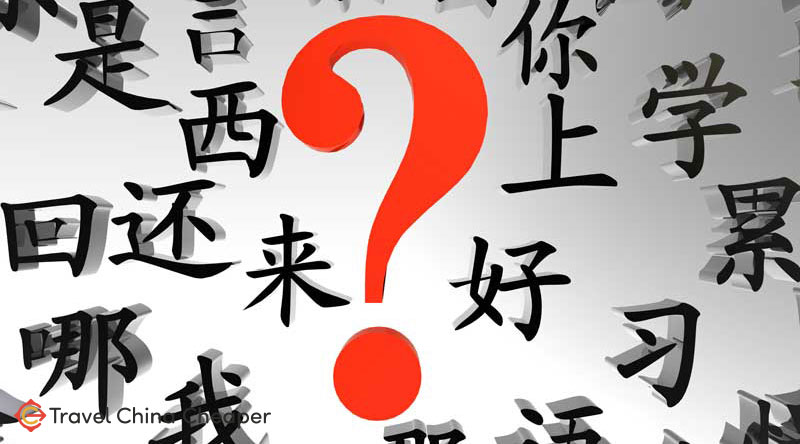
You may not be fluent, but during your travels throughout China you’re going to want to speak at least some basic Mandarin Chinese.
I’ve already spent a little bit of time talking about how it is possible to travel in China without speaking Mandarin, but for those of you who desire to experience the Chinese culture in a deeper way…
…learning Mandarin Chinese is definitely worth the effort!
Based on my experience of self-study, university study and just “living life” study of the Mandarin Chinese language, here are my top 5 favorite tools for learning Chinese, separated by learning style.
If you’re looking for more than just a “top 5”, check out this comprehensive list of Mandarin Chinese learning tools!
Read, Speak or Write Chinese?
What I think will be most helpful here will be if I break this out based on whether or not you want to learn how to read/write Mandarin Chinese or if you just want to be able to speak.
Trust me when I say that it’s a monumental task to try to learn all three at the same time.
It’s basically like learning two different languages at once. If you’re planning just a short trip to China (or anything under a year), I would focus most of my study time on the oral language if I were you.
If however, you plan to spend a few years in China it’s definitely good to build a solid reading and writing foundation for the Chinese characters.
This is especially true if you think you’ll eventually find yourself studying at a Chinese university – reading and writing in that scenario is a must.
#1 ChinesePod or Pimsleur | Listening
I remember before I took my first trip to China, I loaded my phone with the Pimsleur beginner series to listen to during my weekly runs.
It was great!
It’s incredibly cheap (about US$20) and gave me the basic foundation of greetings and conversation that I would need.
I highly recommend this as a cheap option for those who will just be traveling to China for a short period of time.
The Pimsleur system works by having you listen to useful phrases spoken by native speakers and repeating them. New phrases are introduced throughout each lesson while old are rehearsed using spaced repetition.
They have entire levels which cost hundreds of dollars, but for those who want just a basic foundation like I did before I set foot in China, this Pimsleur beginner series was great.
Once I actually arrived in China, however, made a switch away from Pimsleur.
I switched over to ChinesePod, a subscription-based Mandarin learning program that began as a podcast and has grown into this massive, social learning environment.
What that means is that I was able to listen to the lessons all on my phone and then reinforce those lessons with actual worksheets online.
ChinesePod works on a Freemium model, which means that you can subscribe to the podcast through iTunes and listen to many of the Newbie lessons for free.
If you want access to the full library of content as well as online lessons, mobile apps, etc., you’ll need to pay the monthly subscription fee (between $15-$30/mo). They do have a 30-day money back guarantee so it’s worth a try for a free month!
In addition to ChinesePod, there are also a number of other good podcasts for learning Chinese that you can try out.
#2 Rosetta Stone | Best Overall Chinese Language Tool
To supplement what I was learning with the above methods, I also decided to try out Rosetta Stone, one of the biggest names in language learning nowadays.
They offer multiple levels of Mandarin language learning and a lot of their service is now shifting toward a subscription model – including mobile app usage and one-on-one lessons.
What I love about Rosetta Stone is that when using the program, I am learning the language by directly associating a visual object or action with a word.
In other words, I’m not doing translation in my head, I’m learning just as a kid would learn.
What I don’t like about this method is that it is slow – what you learn is difficult to immediately apply because you’re not learning useful phrases, you’re just learning the language.
The subscription model makes the price easier to swallow and the use of your iPhone, iPad or other mobile device is very convenient to study while you’re just sitting around.
#3 YouTube or Youku | Visually (Free)

If you don’t have the budget to spend on some of the tools mentioned above, there’s still hope!
Sites like YouTube and the Chinese version called Youku are filled with Mandarin lessons that are simple to consume.
If you’re in China, you’ll need to know that YouTube is blocked in China, which means that you’ll need to figure out another way to watch videos on YouTube in China.
There’s quite a few Mandarin learning channels on YouTube including YoYoChinese, LearnChineseNow, and many others. Subscribing to their channel allows you to keep up with the weekly additions to their video library. Here’s an example of one of the beginner YoYoChinese lessons:
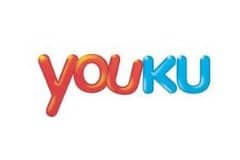
While you may not be able to find the same “learn Chinese”-type channels on Youku, there are countless hours of Chinese programming – for adults and for children – that are great for practice.
Just log on, find something looks interesting (or even a Hollywood movie overdubbed in Chinese) and watch it over and over.
The downside to using these as a learning tool is that they’re not always well-produced or well-organized, but when you’re talking about “free”, it’s hard to complain!
If you’re not in China, it’s still possible to watch Chinese TV from outside of China.
#4 Remembering Simplified Hanzi | Writing
I remember hearing about Remembering Simplified Hanzi when I was first learning Mandarin. Rumor was that some guy had memorized over 3,000 characters in a year and had written a book to teach others.
Turns out, the rumor was true.
The method words like this – instead of rote memorization used on Chinese students – the Remembering Simplified Hanzi process involves creating memorable stories and building upon those stories to help you remember how to not only read 1,500 characters but also how to properly write them.
The program has now expanded to include a second book that dives into an additional 1,500 characters for a total of 3,000. A word to those thinking of using this – my wife loved this book as she was starting with a clean slate (she knew almost no characters).
I, on the other hand, already spent time with other tools to learn to write Chinese and found the repetition of learning the author’s specific stories for these characters far too time consuming.
It’s different for ever person, and there are different preference for the best tools for learning Chinese.
#5 Mandarin Companion | Reading
Lately I’ve fallen in love with a new way to learn to read Chinese characters: graded readers. My favorite are the Mandarin Companion Series, but before I dive into that, let me explain what I mean when I say “graded readers”.
Graded Readers are books that use a limited vocabulary to allow beginner students to read through popular novels.
There’s a whole science behind what’s known as “extensive reading” but all I know is that I enjoy reading Mandarin when I can actually understand most of it.
The Graded Reader series is excellent because I can instantly download the stories to my Kindle program (I use the iPad) and then read through the book using the embedded annotations to help me understand any words that aren’t part of my vocabulary.
The books are long enough that I don’t read them in one sitting and I’ve actually read through my Sherlock book a couple times – it was that good.
Run by John Pasden, also part of ChinesePod, and friend Jared Turner, they are consistently building the library of books that are available and you’re sure to find one that will entertain you while also teaching you to read.
Check out Mandarin Companion Books
Final Thought| Tools for Learning Chinese
No doubt there are hundreds of tools for learning Chinese, but so far these are my favorite. I have a whole different set of tools to help me study and perhaps I’ll dive into that another time.
I suggest you focus most of your time on oral Mandarin and the proper pronunciation of the Pinyin tones – something which many of the audio tools help you do.
Once you get a good foundation there you can move forward with character learning.

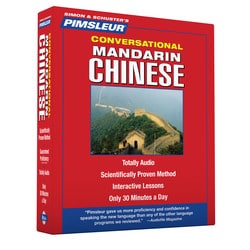


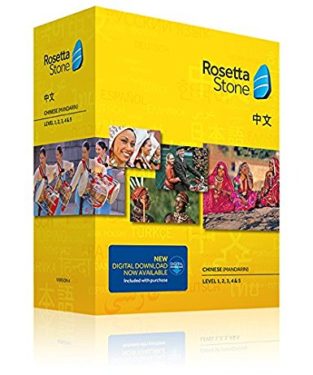

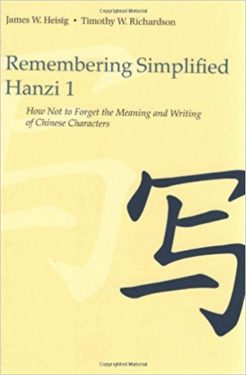





Hey there,
I think The Chairman’s Bao is one to add to your list of resources. Wiki grammar is also quite good!
Thanks,
Thanks for sharing, MC! I have seen Chairman’s Bao and definitely think it’s a great resource.
Thanks for the informative Article. Mandarin Might become the lingua Franca of the future and it would be very good to learn it (at least to learn some basic stuff)
I agree, Mark. Whether or not it becomes the “lingua franca”, it’s still one of the top languages in the world and worthy of learning!
For learning and remembering Chinese characters, may I also suggest the Chinese Blockbuster Series, a comprehensive and fun method to help anyone read simplified and traditional Chinese characters and pronounce them in Mandarin. The series goes beyond the ‘top few Chinese characters you need to know to get by,’ as people too often realize that they don’t get anywhere with such a limited number of characters. The Chinese Blockbuster Series is comprehensive and covers what is necessary to reach reading fluency in modern Chinese.
You can visit their website and download the first 130 pages of Chinese Blockbuster 1 for free, if you wish to have a better understanding of the method.
Hi Josh, thank you for the post.
I’ve been learning Chinese for a while and you gave me some new ideas. As per your recommendation, I started listening to the ChinesePod podcast and now it’s one of my favorite things to do when I’m walking or driving.
As for my personal tips, I find it helpful to use online apps for practicing my vocabulary. I currently use https://www.hackchinese.com/ as it lets me create my personal vocabulary lists and review them a few times a day in quick sessions. This turned out to be a great way to memorise vocab.
Very interesting, Dariya. I’ve never used them before.